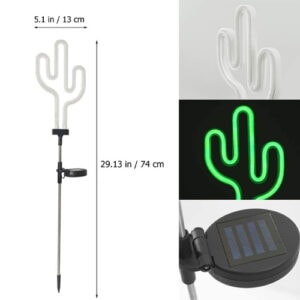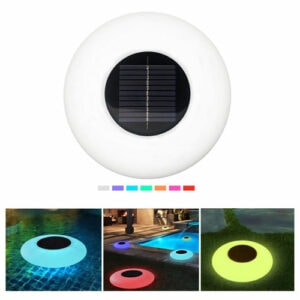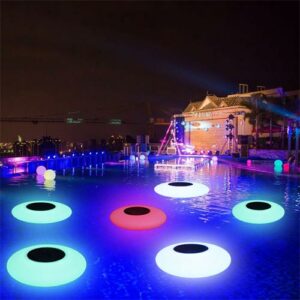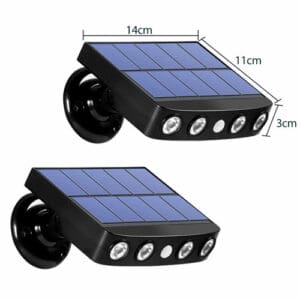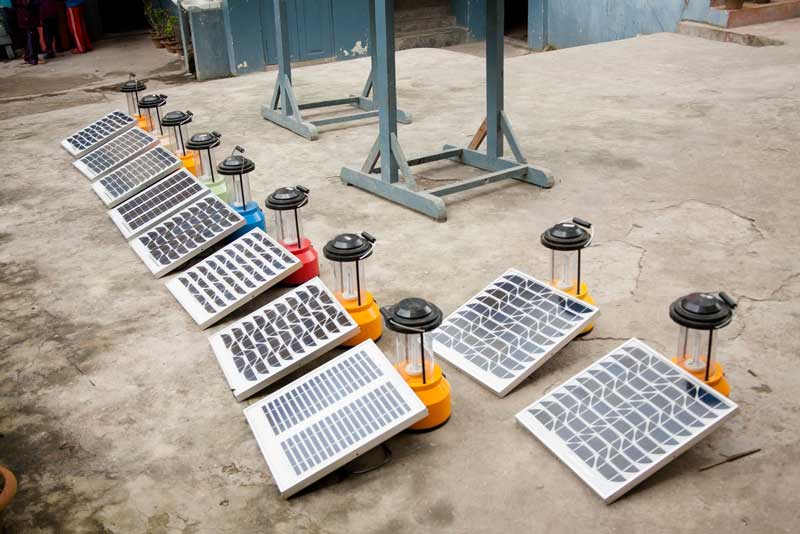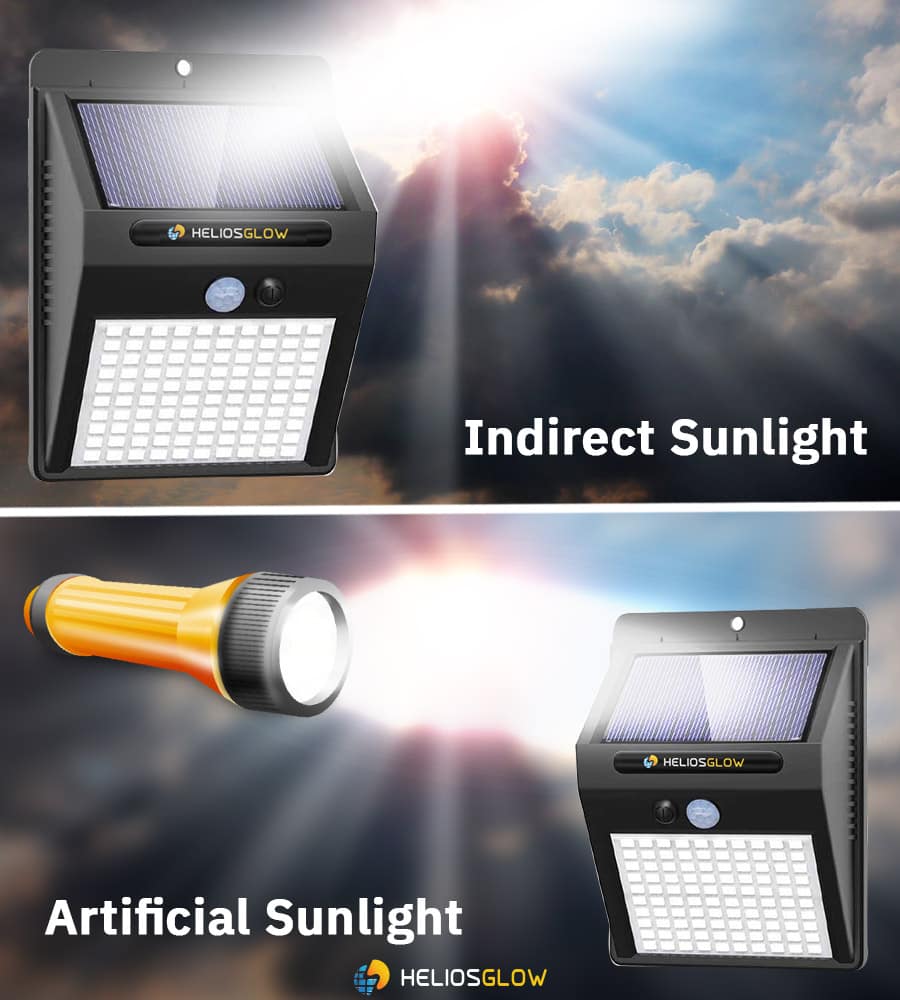Sunlight is the ideal source of power for solar lighting. It can be really challenging to keep your solar lights charged without sunlight. Fortunately, there are methods using which you can still charge your solar lights, even if you don’t have access to direct sunshine, by using alternative methods.
Indirect sunlight makes it simple to charge solar lights during cloudy or chilly conditions. Solar lights are needed the most when the weather is bad or it is very cloudy, and that is exactly when solar lights stop charging themselves. Quite a paradox, isn’t it?
You can bypass this problem with indirect sunlight or artificial lighting, and we will discuss both methods to determine which is more apt. This article will help you understand how you can charge your solar lights efficiently and, more importantly, without ample sunlight.
Method 1: Using Indirect Sunlight
Even when it is cloudy, it’s not like the sun is completely gone. Light is still coming in the daytime, although it is not direct sunlight. The weak sunlight that falls on us during cloudy weather is called indirect sunlight.
It’s sunlight but a weaker version of it. You can still use this light to charge your various solar lights. Keep in mind that indirect sunlight may not be enough to charge a solar grid that is powering heavy appliances or houses. For the sake of simplicity, let’s limit this discussion to small solar lights.
Even though you may not receive powerful, direct sunlight, indirect sunlight will still get the job done. The main advantage of using indirect sunlight is that you don’t need to use any extra equipment or do anything extra to keep your solar light charged. Although there are certain things, you can keep in mind to effectively use indirect sunlight.
Position Your Solar Panels Correctly
When sunlight is scarce, it is best to position the solar panel to face the direction of the sun and keep it away from being shadowed.
Check the direction where the sun is brightest and move your solar panels so that they are angled to face the sunlight directly. Positioning solar panels at an appropriate angle makes it easy for solar lights to work properly and efficiently.
You should also make sure to keep your solar panels away from the shadows. When sunlight is scarce, keeping your solar panel obscured under the shadow isn’t going to help.
If you can’t move your panels, you can direct some mirrors to maximize the sunlight hitting your solar panels. It is not very effective, but it can help.
Tips To Efficiently Use Indirect Sunlight
1. Clean Off The Dirt And Grimes From The Solar Panels
Dirt and grime accumulated on the solar panels can make the charging process slower and less efficient. Make sure that there is no dust accumulated on the solar panels.
Dirt can slow down the charging process. Clean the surface of solar panels with a cloth to remove all the dirt and grime to ensure it receives every bit of limited sunlight. Make sure to keep the solar panel surface clean with periodic maintenance.
2. Turn Off The Lights And Keep Them Charging For at Least 72 hours
When your solar lights are off, they will charge considerably more quickly. Make sure to plant them outside in a spot that will provide them with as much sunlight as possible.
To maintain your solar lights operating as efficiently as possible, it is advised that you perform this often (e.g., once a month). This is called “deep charging.”
Method 2: Using Artificial Lights
Artificial lights can also be used to charge your solar lights. Again, this is keeping in mind that you have a small solar light and not trying to power up your house with light bulbs.
A solar light can typically be charged with the light from most incandescent bulbs, though not as efficiently as with direct sunshine. Place the solar panels directly below a home light to charge them as rapidly as possible without sunshine.
Advantages Of Using Artificial Lights
Artificial lights can be handy when you want to charge a small solar light or something small like a watch or calculator. When you are expecting a power cut and have no sunlight to charge your solar lights, you can use an incandescent bulb to charge up your solar panel.
Since sunlight and incandescent bulbs emit light in the same spectrum, they can be used quite effectively as an alternative.
The Disadvantage Of Using Artificial Light
The biggest advantage of this method is that you will be using power to generate power. Charging with a light bulb can take longer, and you are running an incandescent bulb for about 3 to 5 hours, which can take up a lot of energy.
In turn, you are just charging a small solar light. While this can be a handy method to use during emergencies, it is an inefficient method.
To mitigate power wastage, you can also use LED bulbs to save power and efficiently charge up your solar light.
Important Tips To Keep in Mind When Charging With Artificial Light
1. Keep The Bulb Close To The Solar Panel
Light from the bulb can’t travel too further without losing its energy. So, keep the bulb close to the solar panel for maximum effect. The longer it takes for your solar panel to charge, the farther away it is from an incandescent light bulb. To reduce the time it takes to charge, use a high-wattage light.
2. Keep your solar lights away from porch lights and traffic lights
Solar lights’ sensitivity will deteriorate with time if they are subjected to bright light in the evenings. When utilizing your lights at night, keep them as far away from artificial light sources as possible for the greatest results.
3. When You’re Distant From Home, Use LED Lights To Recharge a Solar Light.
Battery-operated LED lights, such as LED flashlights, can charge solar lights. While you don’t have access to inside illumination, such as when you’re camping, this is the best way to charge solar lights.
If you’re utilizing an LED light to charge your solar panels, make sure to do so for at least 10 to 12 hours. This technique is actually only beneficial if you’re already using an LED light for another purpose.
Indirect Sunlight Vs Artificial Lights | Which is a Better Way of Charging Solar Lights?
Both methods are handy in charging up a solar light when there is no sunlight or very little of it. Both have their own advantages and disadvantages. The best way to differentiate them is by their use cases.
Indirect sunlight is very useful when you have a fixed solar light and the weather is bad or cloudy. Cloudy weather can still charge your solar light. You just have to make sure that the surface panel is clean and is conducting the most light possible.
Using artificial lights has a disadvantage where you need to use a significant amount of power to charge up your solar light. Since you will use an external source of light like a bulb, you have to use energy.
Artificial lights can be useful when you are outdoors and already using a light source. You can simply keep your solar light below the light to charge it. Since you already use light, you can “recycle” it light and use it to charge solar lights for emergencies.
In most cases, the use of indirect sunlight to charge the solar lights is the best way to go, but it has certain limitations. If your light is not movable, under the shadow, obscured from the sun, or indoors, you can’t really see indirect sunlight.
When indirect sunlight is unavailable, artificial lights can be the next best thing. The better way of charging solar lights totally depends on your situation.
Conclusion
You’re all set! You see, there are numerous ways to charge your solar lights without exposure to the sun. You can use indirect sunlight, which uses weak sunlight, usually clouded, to charge your solar panel, or you can use artificial light like an incandescent bulb or an LED bulb.
Both methods have their own pros and cons. The preferred method should be based on your situation. We hope these easy hacks help you with your solar light charging problem. Even other solar-powered devices and equipment can use these if they have solar panels.
Just keep in mind that these methods work for smaller appliances and lights but not for powering houses or heavy electrical equipment.

